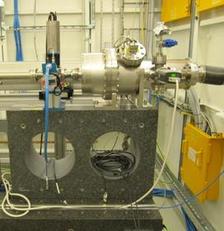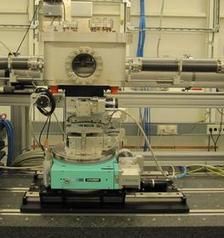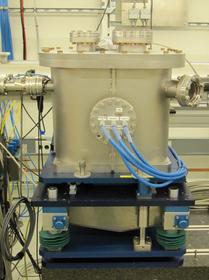Slit system
In the following the components which are situated on a 2.7m long optical table in EH2 are described. The 5-axis table is similar to the optical table at the beginning of EH1. The table can be moved out of the beam to install a DN200 (8" tube ID) flight tube, which allows to have a sample in EH1 and use the detectors in EH2.
A piezo drien water-cooled slit system (Galil 2) followed by a monitor unit are sitting on a granite block at the start of the optical table in EH2. The maximum nominal slit opening is 10x10mm<sup>2</sup> and the resolution of the slit position is 0.2 microns. Similar to EH1, the monitor unit is based on scattering of a thin Kapton foil under 45° in combination with a Cyberstar scintillator detector.
The beamline uses Beryllium lenses to reach focal spot sizes between 2-4 microns in both, vertical and horizontal, direction. The lens changer (transfocator design) is equipped with 12 stacks of interchangeable Beryllium lenses, which allows to have the correct lens combination for the desired focal distances (of several meter) and for X-ray energies between 5-20 keV.








